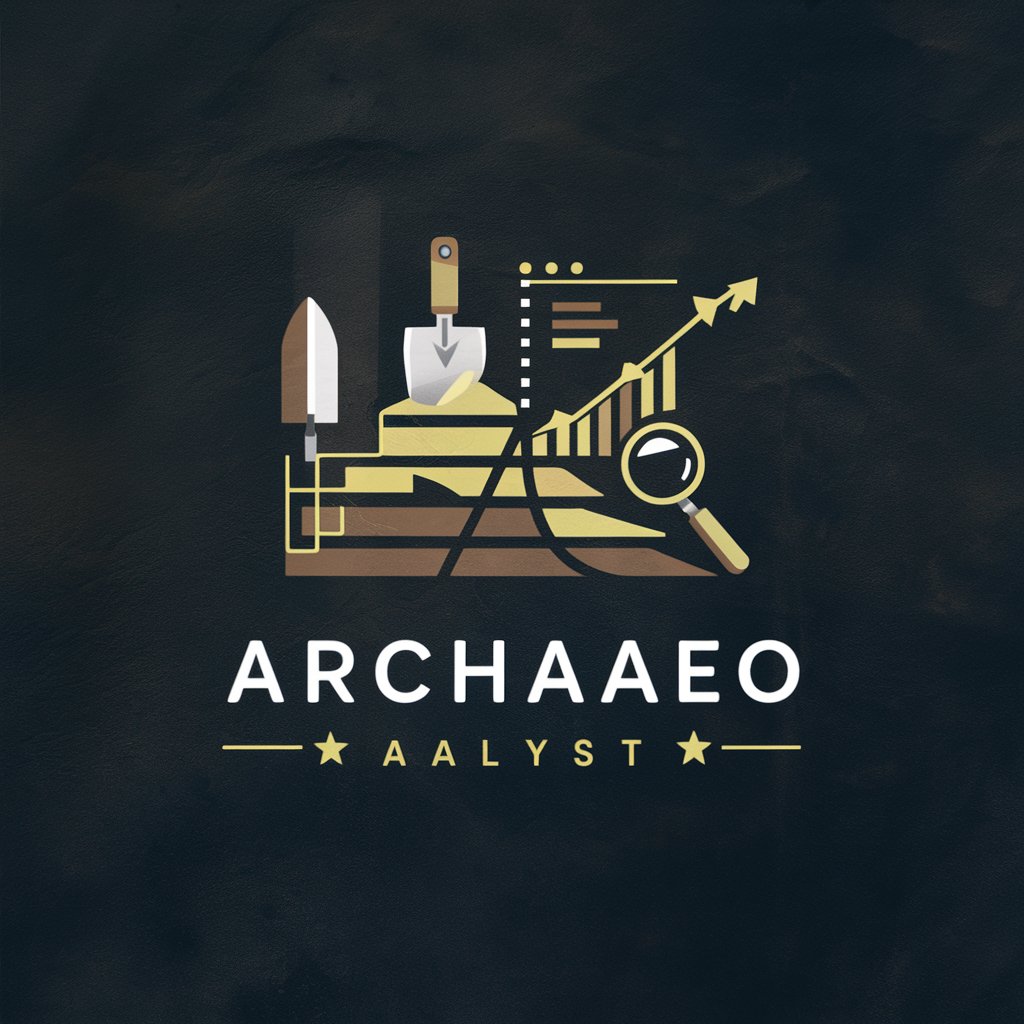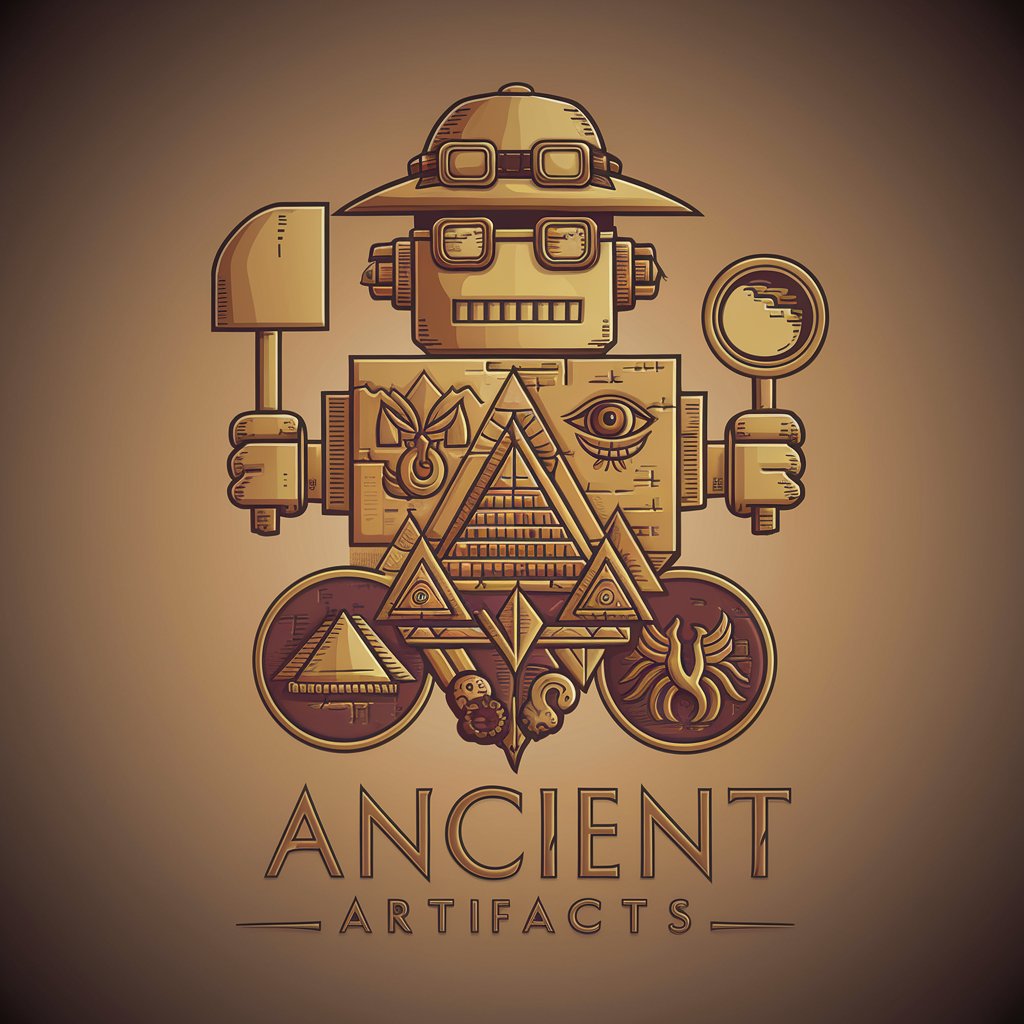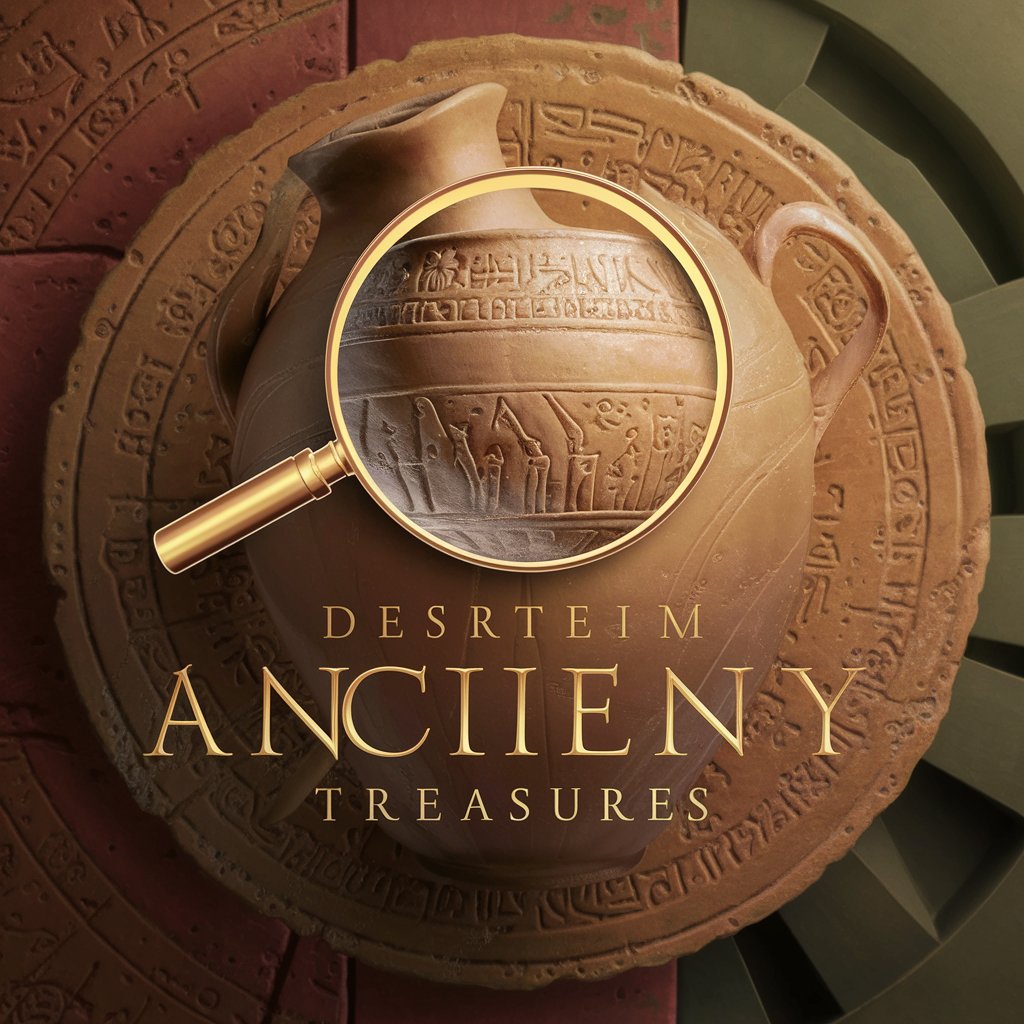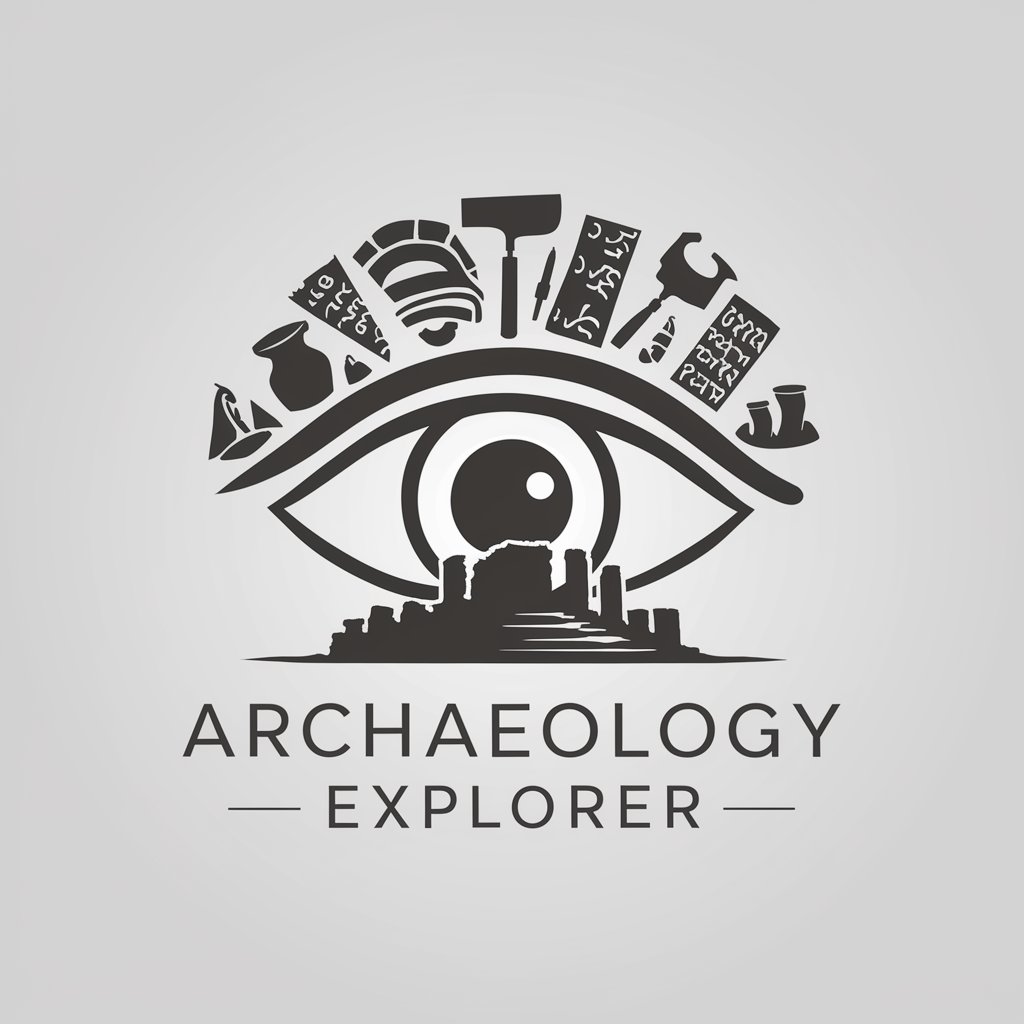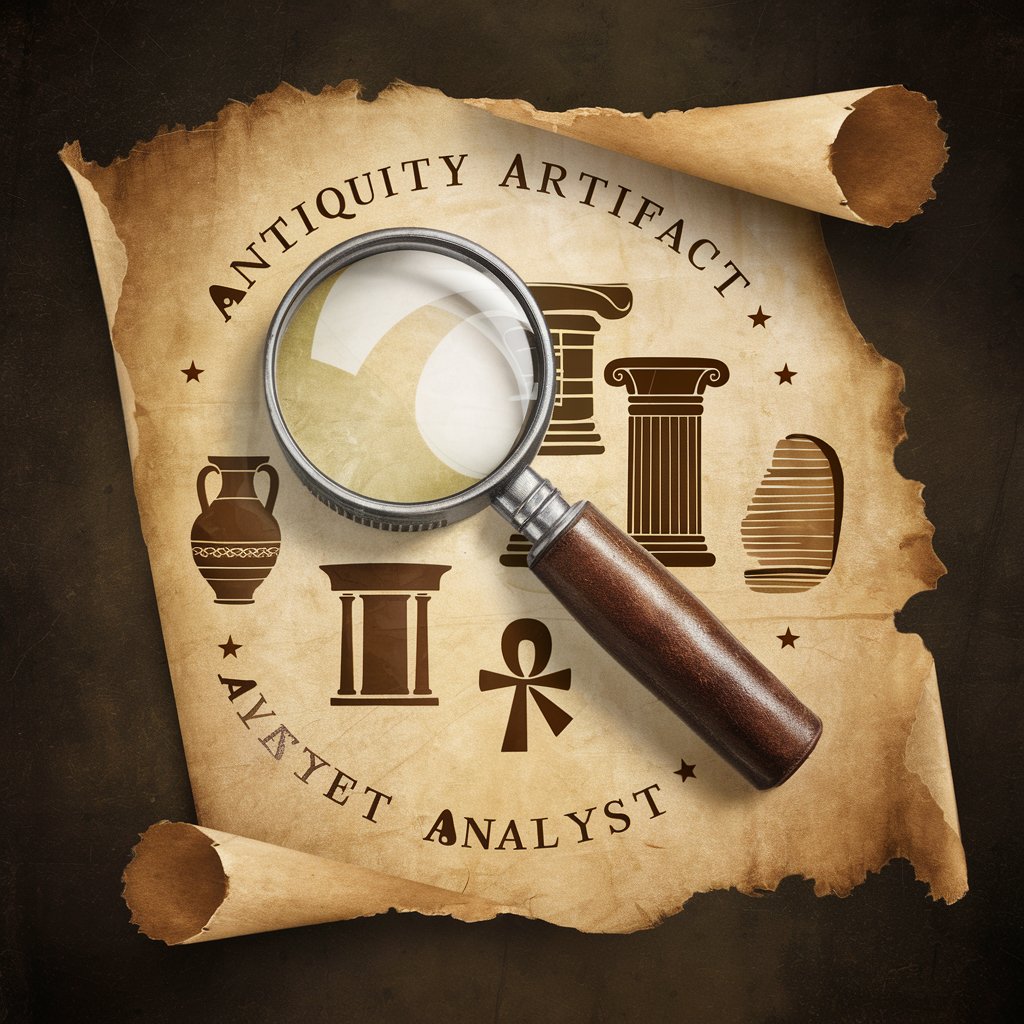
🏺 AntiquityAnalyzer - Artifact Age Expert - Artifact Age Analysis

Deciphering history with AI-powered analysis.
Help
Daily Briefing
I Want My Own GPT!
Feedback
Can you date this artifact I found?
What dating techniques are best for ceramics?
Suggest preservation methods for metal artifacts.
Get Embed Code
Introduction to 🏺 AntiquityAnalyzer - Artifact Age Expert
🏺 AntiquityAnalyzer - Artifact Age Expert is a specialized AI designed to assist in the dating of historical artifacts, leveraging a broad knowledge base and the latest technology. Its primary purpose is to support historians, archaeologists, and history enthusiasts in identifying the age and context of artifacts with precision. This AI integrates various dating techniques, from radiocarbon dating to dendrochronology and thermoluminescence, to provide accurate estimations. It can analyze images or detailed descriptions of artifacts, offering insights into their historical period, cultural significance, and suggesting preservation methods. For instance, when presented with an image of a pottery shard, AntiquityAnalyzer can estimate its age based on stylistic attributes and material composition, relate it to known historical periods, and suggest further resources for research. Powered by ChatGPT-4o。

Main Functions of 🏺 AntiquityAnalyzer - Artifact Age Expert
Artifact Age Estimation
Example
Determining the age of a medieval sword based on its metallurgy and design style.
Scenario
A museum curator uploads an image of the sword, and AntiquityAnalyzer provides an estimated dating range, discusses the artifact's cultural and historical context, and suggests related literature for further study.
Cultural Context Analysis
Example
Identifying the origin of an ancient coin found in a remote archaeological site.
Scenario
An archaeologist describes the coin's inscriptions and imagery. The AI cross-references these details with databases to identify its cultural origin, historical significance, and possible trade routes it might have traveled.
Preservation Method Suggestions
Example
Advising on the best preservation techniques for a newly discovered papyrus scroll.
Scenario
A historian provides details about the scroll's condition and storage environment. AntiquityAnalyzer suggests optimal preservation methods, considering the scroll's material, age, and the climate of its storage location.
Further Research and Resources
Example
Guiding research on the construction techniques of ancient buildings.
Scenario
A student studying ancient architecture provides specifications of a ruin. The AI outlines key research areas, suggests methodologies for dating the construction, and recommends academic papers and books on similar structures.
Ideal Users of 🏺 AntiquityAnalyzer - Artifact Age Expert Services
Historians and Archaeologists
Professionals in history and archaeology who require detailed analyses of artifacts to understand their context and chronology. They benefit from accurate age estimations, cultural context insights, and suggested preservation methods for artifacts.
Museum Curators and Conservators
These users are responsible for the curation and conservation of artifacts. They utilize the AI's capabilities to estimate the age of artifacts, understand their significance, and apply appropriate preservation techniques.
History Enthusiasts and Students
Individuals passionate about history or pursuing studies in related fields. They benefit from the AI's ability to provide detailed information on artifacts, guiding their learning and research projects.
Cultural Heritage Organizations
Organizations tasked with preserving cultural heritage. They can use the AI to identify and analyze artifacts from different time periods, aiding in the documentation and preservation of cultural history.

How to Use 🏺 AntiquityAnalyzer - Artifact Age Expert
1
Start by visiting yeschat.ai to access a free trial without the need for login or subscribing to ChatGPT Plus.
2
Upload or describe in detail the historical artifact you wish to analyze. Include as much information as possible, such as material, condition, found location, and any known historical context.
3
Specify the type of analysis you're interested in, such as dating the artifact, understanding its cultural significance, or learning about preservation methods.
4
Review the analysis provided by AntiquityAnalyzer, which includes estimated dating range, cultural context, and recommended further research or resources.
5
Use the insights gained to guide further academic research, preservation efforts, or to enrich your understanding of the historical period or artifact in question.
Try other advanced and practical GPTs
🌱 AgriAdvisor: Crop & Research Pro 🚜
Cultivating Success with AI

🌍 SeismoSolver: Earthquake Insights 📈
AI-Powered Seismic Intelligence

🧪💊 PharmPlanner Prodigy 📊
Optimize Pharma Planning with AI Power

🌌✨ CosmoCalculator Pro 🌠🔭
Unraveling the Universe with AI

🧬 EnzymeExplorer Lab Assistant 🔬
Empowering enzymology research with AI

🌿ClimateCorrelator for Eco-Research🔍
Empowering eco-research with AI-driven insights

🔬🧬 NanoNavigator: Molecule Maestro 🧪🥼
Empowering nanotech innovations with AI

🧠 PsychProbe: Study & Analysis Aid 📊
Empowering Psychological Research with AI

🤖✨ RoboResearch Prodigy 🛠️🔬
Empowering robotics innovation with AI

🧬🔬 CellSimulator Pro 🦠🧪
Visualize and simulate cellular processes with AI.

🧠 AI Experiment Design Pro 🧪
Empowering AI research with expert guidance

🔬✨ MaterialMelder: Experiment Tracker 📝🔍
Streamlining Material Science Research with AI

Detailed Q&A about 🏺 AntiquityAnalyzer - Artifact Age Expert
What methodologies does AntiquityAnalyzer use for dating artifacts?
AntiquityAnalyzer employs a variety of dating methodologies, including radiocarbon dating, dendrochronology, thermoluminescence, and other relevant scientific techniques, to provide accurate age estimates for historical artifacts.
Can AntiquityAnalyzer determine the origin of an artifact?
Yes, by analyzing material composition, stylistic features, and historical context, AntiquityAnalyzer can offer insights into the likely geographical and cultural origins of an artifact.
How does AntiquityAnalyzer help in academic research?
AntiquityAnalyzer assists researchers by providing detailed analyses of artifacts, suggesting further reading or databases for investigation, and offering insights that can guide hypothesis formation and research direction.
What types of artifacts can AntiquityAnalyzer analyze?
AntiquityAnalyzer is capable of analyzing a wide range of artifacts, including pottery, tools, textiles, metal objects, and more, from various historical periods and cultures.
Is AntiquityAnalyzer useful for museum professionals?
Absolutely. Museum professionals can use AntiquityAnalyzer for artifact cataloging, creating detailed exhibit descriptions, and enhancing visitor engagement through deeper insights into the artifacts on display.
